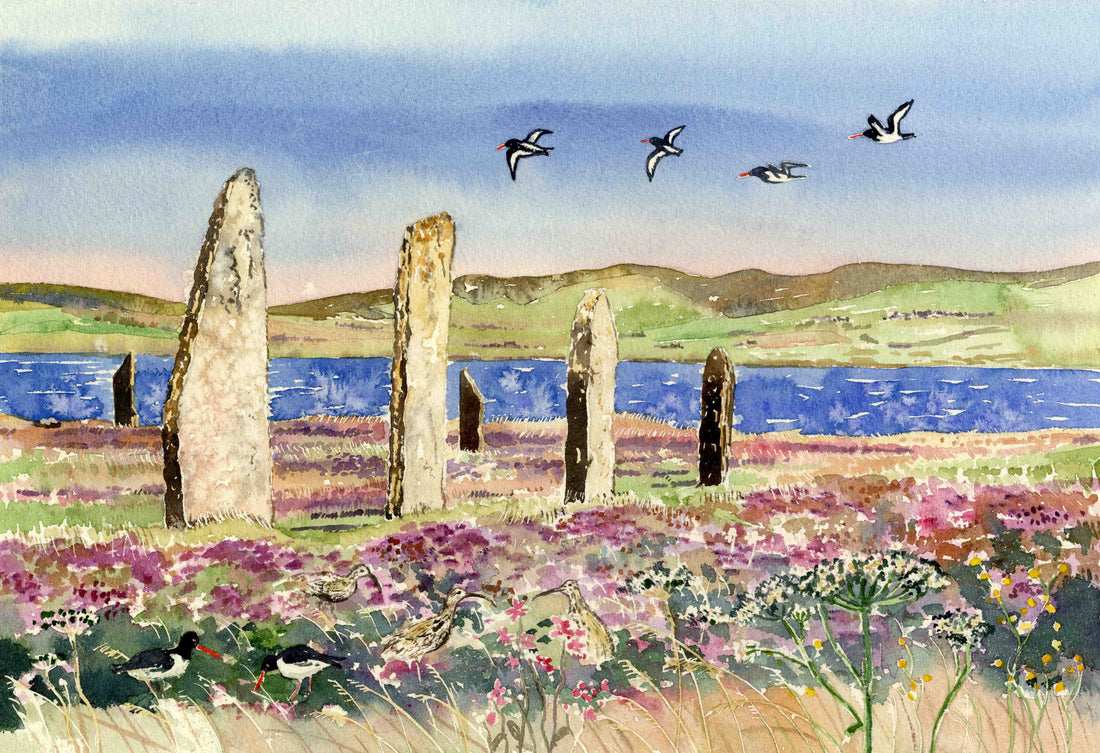The Ring of Brodgar or as it is sometimes called the Dancing Giants originally consisted of 60 stones but only 27 stand today.
This enormous ceremonial site dates back to the third millennium BC.
It is one of four monuments in Orkney's UNESCO World Heritage site known as 'The Heart of Neolithic Orkney' the other sites are the nearby Standing Stones of Stenness and Maeshowe tomb and then further to the west, the neolithic village of Skara Brae.
The stones are a red/pink colour known as Hematite which comes from Orkneys iron ore.
There are 1,303 stone circles in the world with 508 of them in Scotland and The Ring of Brodgar is the third largest stone circle in the British Isles.
It is thought that The Ring of Brodgar was used as a religious shrine or place of ritual but the truth is no one really knows.
The stones were quarried at Vestrafiold in Sandwick and dragged over slippery seaweed using ropes to help the stones move easily over the 8 miles of ground to the area of Brodgar. The neolithic people at the time must have been very organised, healthy and strong to have managed such a feat. Some people believe the act of building the stone circle was more important the the circle itself.
The Ring of Brodgar is surrounded by a deep ditch carved out of sandstone bedrock which may have been filled with water perhaps to emphasise the importance of the ring.
Visit my Ring of Brodgar collection of gifts and prints at

